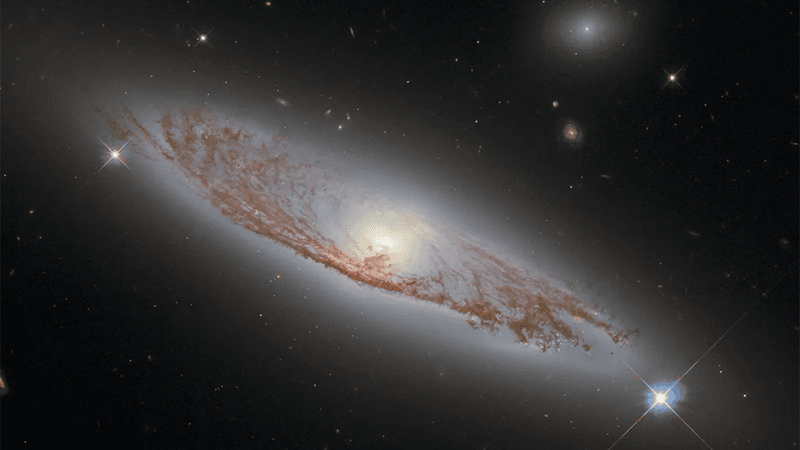Astronomers have found an incredible gravitational lens. Thanks to a chance alignment, a foreground cluster of galaxies has magnified the light of not one, but seven background galaxies, creating a gravitational lens that has been described as “most exquisitely aligned”. It has been dubbed the Carousel Lens.
Gravitational lenses are created by the gravity of massive objects, usually galaxies or clusters of galaxies. Their density is such that they warp spacetime, creating a lens that can magnify and change the shape of distant objects. In this case, there are four massive galaxies in the foreground that act as a lens, three of them close to each other. They are located about 5 billion light-years from us.
This is literally a one-in-a-billion object in the sky.
Dr David Schlegel
The seven background galaxies are spread out far across the universe, the closest being 7 billion light-years away and the furthest 12 billion light-years away. It was simply chance that placed the lens and those seven galaxies in a single line of sight from our vantage point.
Galaxy number four is particularly interesting. Its location behind the lens is such that it creates an Einstein cross. Four images are clearly visible 90 degrees from each other (with a secret fifth in the middle too dim to see). This is the largest Einstein cross ever seen and it tells us that the distribution of mass in the lens is quite symmetrical.
“This is literally a one-in-a-billion object in the sky. The images that we used for this search contained a billion astrophysical objects, mostly galaxies, and this was a rare alignment of galaxies that we found in those data,” co-author Dr David Schlegel, a senior scientist in Berkeley Lab’s Physics Division, told IFLScience.

The discovery is part of observations conducted in the context of the Dark Energy Spectroscopic Instrument (DESI) Legacy Imaging Surveys. The team stresses that all the images are publicly available and anyone can see them online. But good luck finding a more striking representative of strong gravitational lenses than the Carousel.
“About 2,000 strong lenses have been found in this set of imaging data, from our team and competing teams. This is visually the most striking, and arguably the most interesting for continued study,” Dr Schlegel explained.
Gravitational lenses are not just pretty – they are also pretty useful. Their formation is predicated on the distribution of dark matter around the galaxies of the lens, a way for astronomers to infer where the invisible dark matter might be. Understanding dark matter and dark energy is critical to discovering if they do indeed exist and exactly what they are.
“Our excitement with this particular object is precisely because it can be used for cosmological studies. What makes a gravitational lens most useful for cosmology is to have multiple lensed galaxies and a simple, symmetric distribution of mass. This satisfies those conditions and then some – lensing seven background galaxies is a record. It’ll be interesting to see if that record is ever broken,” Dr Schlegel told IFLScience.
The study is published in The Astrophysical Journal.




![An artist’s concept looks down into the core of the galaxy M87, which is just left of centre and appears as a large blue dot. A bright blue-white, narrow and linear jet of plasma transects the illustration from centre left to upper right. It begins at the source of the jet, the galaxy’s black hole, which is surrounded by a blue spiral of material. At lower right is a red giant star that is far from the black hole and close to the viewer. A bridge of glowing gas links the star to a smaller white dwarf star companion immediately to its left. Engorged with infalling hydrogen from the red giant star, the smaller star exploded in a blue-white flash, which looks like numerous diffraction spikes emitted in all directions. Thousands of stars are in the background.]](jpg/jet-m.jpg)
